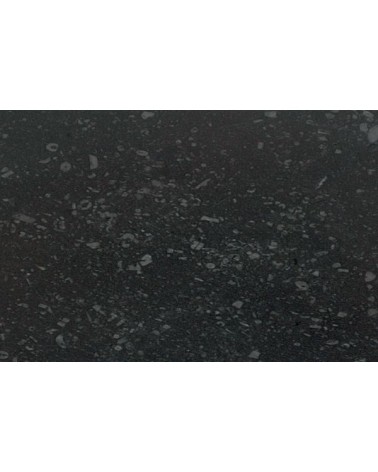
Irish limestone
All prices incl. VAT, plus shipping costs.
For deliveries to countries other than Germany
the final prices may change in the checkout.
MORE INFO
We deliver fast - Postage free from 150 € (DE) - 60 days right of return - mail@bildhau.de - Tel.: +49 (0)221-99874700


All prices incl. VAT, plus shipping costs.
For deliveries to countries other than Germany
the final prices may change in the checkout.
MORE INFO
Die fossilen Fragmente geben diesem härteren Kalkstein sein charakteristisches Aussehen, während der fein im Gestein verteilte Kohlenstoff einen außergewöhnlichen Farbkontrast von hellgrau über dunkelblau bis zu glänzendem Schwarz abhängig von der Oberflächenausführung ergibt.
TECHNISCHE ANGABEN
| Herkunft | Irland |
| Härtegrad Mohs | 3,5 |
| Aussehen | dunkel blau-grau bis schwarz mit helleren Einlagerungen |
| Struktur | homogen |
| Dichte | ca. 2,7 kg/dm³ |
| Druckfestigkeit | ca. 110 - 126 MPa |
| Biegefestigkeit | ca. 14,7 MPa |
| Wasseraufnahme | ca. 0,14 % (Gew) |
| Porosität | ca. 0,31 % (Vol) |
BEARBEITUNG
Irischer Limestone, auch Irischer Blaustein genannt, lässt sich sehr gut von Hand bearbeiten, die Arbeitsschritte sind ähnlich wie beim Marmor: Für die gröbere Formgebung und größeren Materialabtrag kommt das Spitzeisen zum Einsatz, zum Glätten und Formen von Details das Zahneisen und das Flacheisen bzw. Schrifteisen. Beim Einsatz eines Spitzeisens ist darauf zu achten, nicht zu tief zu arbeiten, vor allem wenn der Stein poliert werden soll. Wird das Spitzeisen im zu steilen Winkel angesetzt, können beim Polieren weiße Stellen sichtbar bleiben. Da der Irische Limestone Dolomit und Quarz enthält, empfehlen wir, mit Hartmetall-Werkzeugen zu arbeiten.
Der Irische Blaustein lässt sich hochglänzend polieren. Je nach Oberflächenbearbeitung variiert die Farbe des Steins: Durch Kohlenstoffeinlagerungen in die Calcitkristalle verfügt der Irische Limestone über eine blaue Grundfarbe, was sich vor allem beim Grobschliff zeigt. Der gespaltene Stein erscheint eher dunkelgrau mit blassen Fossilrestflecken. Je feiner der Stein geschliffen und poliert wird, desto stärker kann der Kontrast zwischen Grundmasse und Einlagerungen werden, bis hin zu schwarz-weiß.
Beim Schlagen des Steins kann es zu einer leicht schwefeligen Geruchsbildung kommen, die jedoch weniger stark ausgeprägt ist als z.B. beim Belgischen Blaustein.
Insbesondere hochglanzpolierte Skulpturen aus Irischem Limestone eignen sich vor allem für die Aufstellung in Innenräumen. Im Außenraum aufgestellte Skulpturen verlieren mit der Zeit ihre Hochglanzpolitur.
WEITERE INFOS
Blauer Kalkstein aus Irland (Irish Blue Limestone) wurde vor rund 340 Millionen Jahren als ein kompakter crinoidischer Kalkstein mit reichem Fossiliengehalt, hauptsächlich an Brachiopoden (Muscheln) und Polypen, gebildet. Chemische Zusammensetzung: mehr als 98% Calcit, 0,7% Dolomit, 0,7% Quarz, 0,2% organischer Kohlenstoff, weniger als 0,1% Eisensulfit.
Hier finden Sie interessante Informationen zum Berechnen des Gewichtes eines Bildhauersteines.